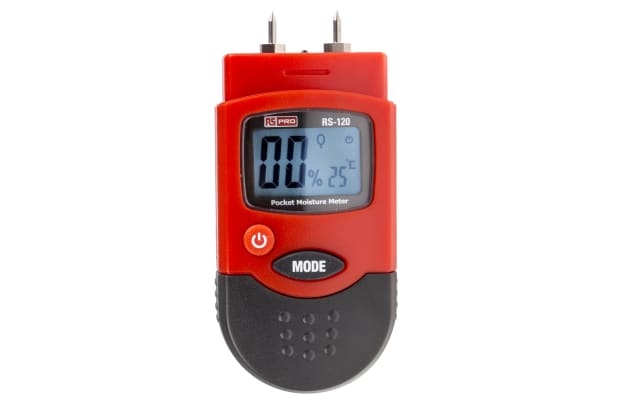Recognizing the Relevance of a Moisture Meter in Avoiding Mold and Water Damages in Your Home
In the world of home maintenance, the presence of moisture can often be a quiet yet powerful adversary, with the ability of creating prevalent mold and mildew growth and insidious water damage if left unattended. Among the relaxing ambiance of a residence, hidden moisture problems can brew under the surface, presenting a risk to both residential property and wellness. Nonetheless, outfitted with the right tools and understanding, house owners can proactively battle these possible hazards. Understanding the importance of a dampness meter in this fight is not simply a choice but a tactical need.
Significance of Moisture Detection
Efficient moisture discovery methods are essential for guarding homes and preventing possible mold development and water damages. Wetness can seep into various building materials, resulting in structural concerns and health risks. By utilizing a dampness meter, residential or commercial property proprietors can proactively identify locations susceptible to excess wetness, enabling for prompt intervention and reduction methods.
Moisture meters supply precise readings of moisture degrees in different products such as drywall, wood, and concrete. This data assists in identifying locations of issue, also in covert or hard-to-reach places. Early discovery of wetness build-up enables punctual repair work or modifications to protect against additional damage.

Just How Moisture Meters Work
Moisture meters play a crucial function in the aggressive recognition of excess moisture, helping in the prevention of prospective mold development and water damage by supplying accurate analyses of moisture levels in numerous building products. These devices work based upon different concepts, relying on their type. Moisture Meter. Pin-type dampness meters, for example, have 2 pins that penetrate the product to gauge the electrical resistance in between them. When moisture is present, it improves the material's conductivity, bring about a lower resistance analysis. Pinless dampness meters, on the other hand, usage electro-magnetic sensors to check the product without causing damages. These sensing units release electro-magnetic signals that penetrate the product and gauge the dielectric buildings, indicating wetness web content. Some progressed moisture meters pin both incorporate and pinless technologies for extensive wetness discovery. Understanding how moisture meters feature is crucial for prompt and precise dampness level analyses, enabling effective precautionary procedures versus mold and mildew and water damages.
Finding Early Caution Signs
Upon preliminary examination of a home, identifying refined indicators of excess moisture ends up being critical in the early detection of potential mold growth and water damages. Water discolorations can signify leakages or infiltration, while peeling paint or wallpaper may be a result of wetness compromising the attachment of these products to the surface. In addition, an increase in allergic reaction signs and symptoms or respiratory system concerns among passengers might recommend the visibility of mold due to excess wetness.
Protecting Against Mold And Mildew Development
Recognizing early warning signs of excess wetness within a residential property not just enables punctual detection of possible mold growth and water damages but likewise works as an aggressive measure in avoiding the expansion of mold and mildew. To successfully avoid mold and mildew development, it is crucial to resolve any kind of sources of wetness immediately. This can include dealing with leakages in windows, pipelines, or roofing systems, guaranteeing correct air flow in moist areas like restrooms and cooking areas, and making use of dehumidifiers in high-humidity spaces. Frequently maintaining the building and examining's pipes, roofing, and rain gutters can additionally assist in protecting against water invasion that could result in mold growth.
In enhancement to dealing with moisture sources, keeping indoor humidity degrees listed below 60% can considerably hinder mold and mildew growth. Appropriate air flow, sufficient insulation, and making use of air conditioners or followers can help control interior humidity degrees. Keeping an eye on wetness degrees in areas prone to dampness, such as cellars and creep areas, using a dampness meter can likewise browse around this site help in very early discovery of raised dampness degrees and prospective mold growth. By taking proactive actions to avoid excess dampness and mold and mildew development, property owners can guard their home and interior air top quality.
Benefits of Regular Monitoring
Routine monitoring of wetness degrees in a residential property can play an essential role in preserving a healthy interior environment and preventing possible mold and mildew and water damage. By on a regular basis checking moisture levels, property owners can identify any type of problems immediately and take essential activities to avoid mold growth and water damage. Among the essential benefits of regular tracking is very early discovery. By recognizing and dealing with high wetness levels early on, homeowners can intervene prior to mold and mildew has the chance to spread and establish. This proactive strategy can conserve both money and time in the future by stopping considerable mold and mildew removal and repair service costs.
In addition, routine monitoring allows house owners to track patterns and trends in dampness levels gradually. By developing a baseline and surveillance modifications, individuals can identify any kind of areas of issue or potential vulnerabilities in the property's structure. This data-driven approach allows targeted interventions and maintenance initiatives to attend to underlying concerns prior to they escalate right into more significant problems. Eventually, the consistent surveillance of moisture degrees equips house owners to shield their building, protect their wellness, and protect the stability of their indoor atmosphere.

Final Thought

By utilizing a moisture meter, property proprietors can proactively identify areas susceptible to excess dampness, enabling for timely intervention and mitigation strategies.

Checking moisture degrees in areas prone to wetness, such as basements and crawl rooms, using a wetness meter other can also assist in very early detection of raised moisture levels and potential mold development. (Moisture Meter)